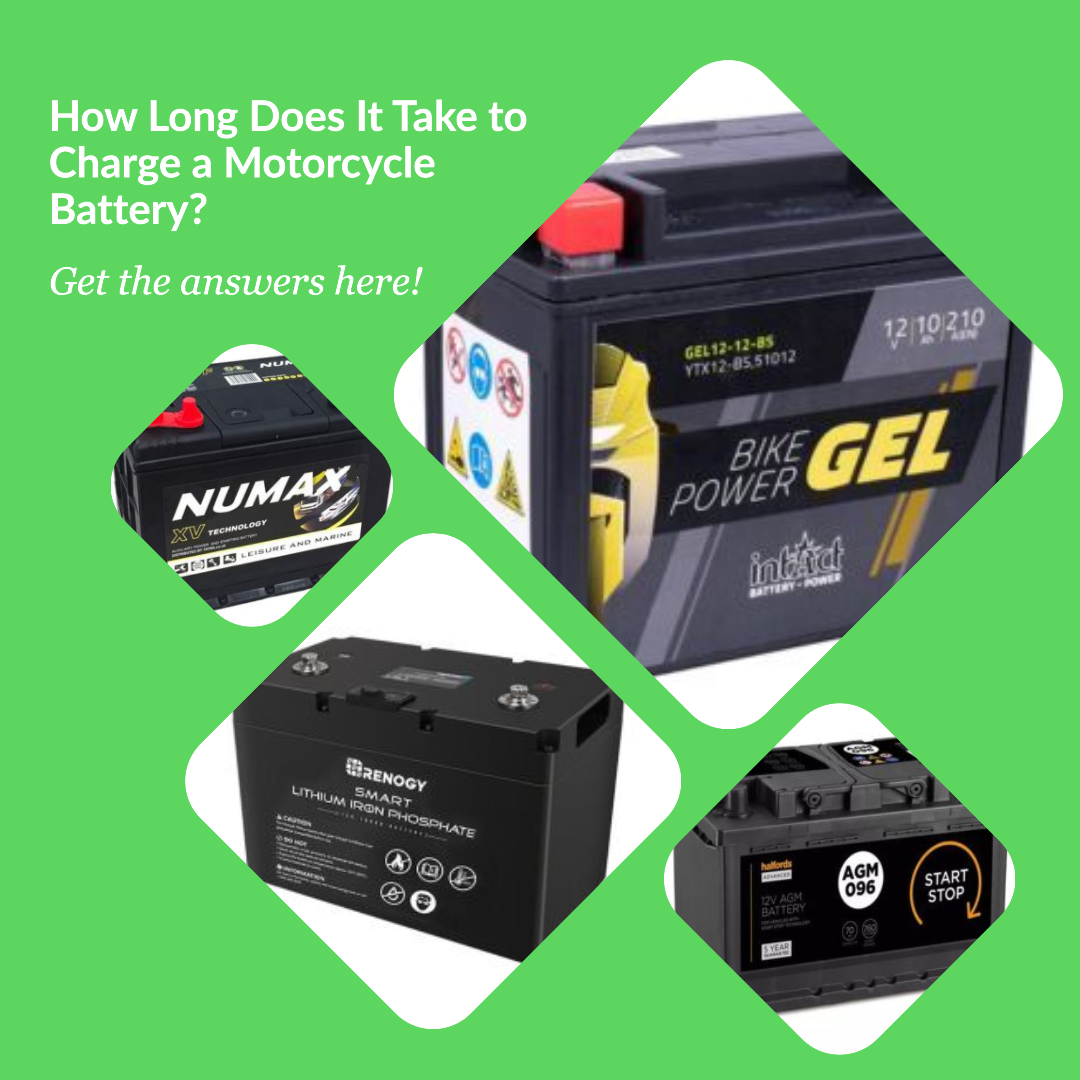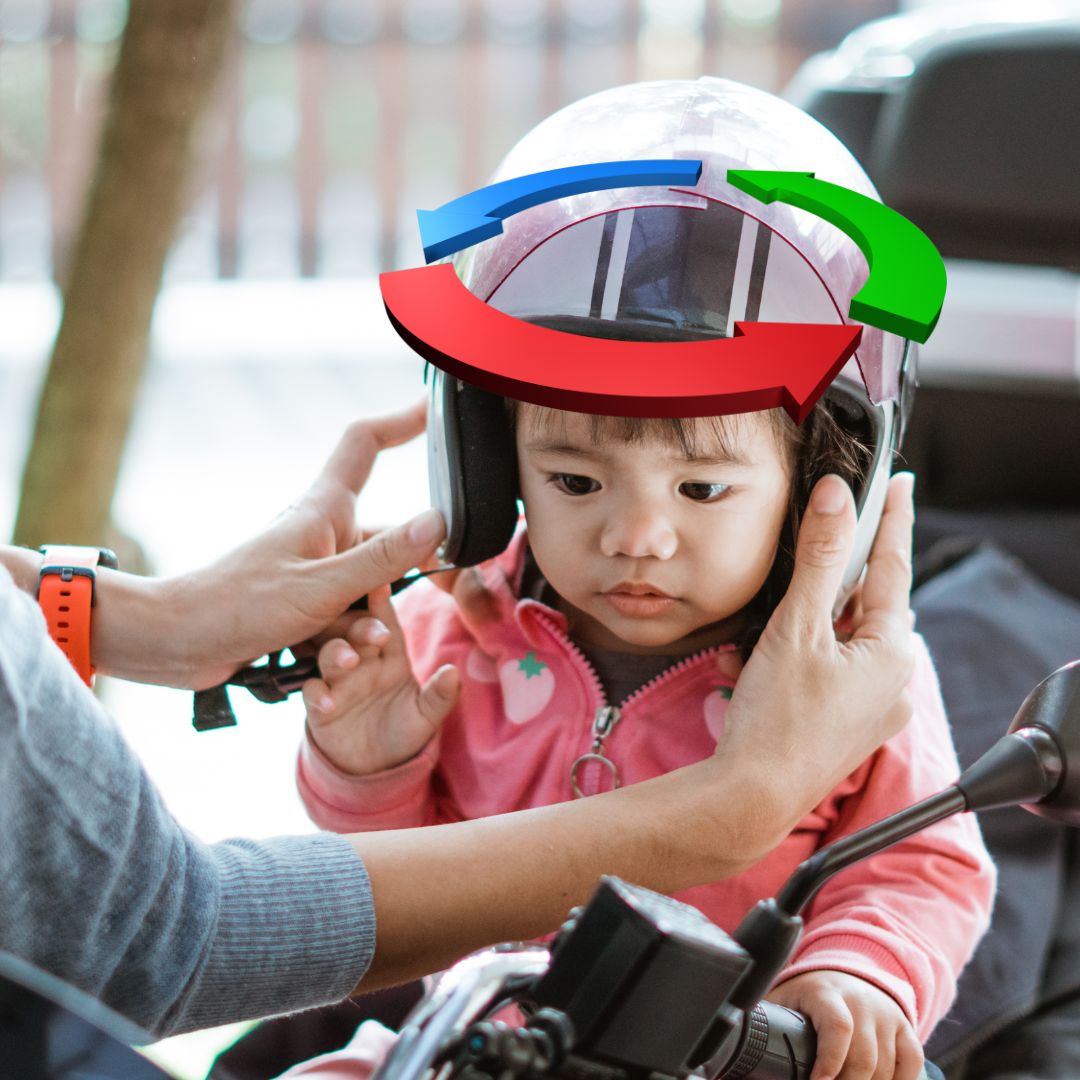Updated: 24.4.25

Ever found yourself stranded with a dead motorcycle battery and no idea how long it’ll take to recharge?
You're not alone. A drained battery can quickly turn a day of riding into a major headache—especially if you're short on time or far from home.
But what if you understood exactly how your battery works, how long each type takes to charge, and how to avoid issues in the future?
That’s exactly what this guide delivers.
We'll break down the different types of motorcycle batteries, explain what affects their charging time, offer troubleshooting advice, and share expert maintenance tips to keep your battery running stronger for longer.
Let’s get into it—and make battery anxiety a thing of the past.
Understanding Motorcycle Battery Types
Motorcycle batteries come in four main types: Wet Cell (Flooded), Gel, AGM, and Lithium-ion. Each has unique traits that affect how they charge and how long they last.
Wet Cell (Flooded) Battery
These are the classic lead-acid batteries. Affordable and widely used, they need regular maintenance—like topping up water levels and checking for leaks.
Charging time: 6 to 24 hours. The first 70% charges quickly; the final 30% takes the longest due to the slowing chemical reaction.
Gel Battery
Gel batteries use a thickened electrolyte, making them spill-proof and vibration-resistant. They're great for performance bikes, but pricier and sensitive to overcharging.
Charging time: 6 to 12 hours using a low-voltage charger.
AGM (Absorbent Glass Mat) Battery
These sealed batteries wick electrolyte between plates for better power delivery. They're compact, maintenance-free, and quick to charge.
Charging time: 4 to 6 hours.
Lithium-ion Battery
Lightweight, long-lasting, and fast-charging, these batteries are the top choice for modern bikes. But they require compatible chargers to prevent damage.
Charging time: 1 to 2 hours.
What Affects Battery Charging Time?
Several key factors influence how long your battery takes to charge:
- Battery type: Lithium charges fastest; wet batteries are the slowest.
- Age & condition: Older batteries charge slower and may not hold charge well.
- Ambient temperature: Cold weather slows charging; heat speeds it up—but can be damaging.
- Charger type: Smart chargers optimize speed and safety.
Related: How You Can Charge a Motorcycle Battery Without a Charger
The Importance of Using the Right Charger
Using the wrong charger can destroy your battery. Always match the charger to the battery type—especially with lithium-ion models. Smart chargers are your safest bet, automatically adjusting voltage and preventing overcharging.
What Happens If You Charge Incorrectly?
Charging with the wrong chemistry or voltage can reduce battery life—or kill it altogether. Stick to battery-specific charging settings, especially with high-performance or lithium units.
Pro Tips for Battery Maintenance
- Inspect terminals for corrosion regularly.
- Clean dirt and debris with a soft cloth and baking soda solution.
- Keep the battery charged during off-season with a trickle charger.
- Store batteries in a cool, dry place away from direct sunlight.
Charging Troubles? Here's How to Troubleshoot
Slow Charging
Could be a faulty charger or a battery near the end of its life. Test with another charger before replacing the battery.
Doesn’t Hold Charge
This usually points to internal cell failure. If a charge doesn’t last, it’s time for a replacement.
Won’t Charge At All
Common causes include a dead cell, faulty alternator, bad rectifier, or blown fuse.
Smart Charger Recommendations
Look for models with automatic shutoff, trickle charging, and compatibility with multiple battery types (especially lithium settings). Brands like NOCO, Battery Tender, and OptiMate are trusted for motorcycle batteries.
Safety First
- Wear gloves and eye protection when handling batteries.
- Charge in well-ventilated areas.
- Never overcharge—it can cause swelling or even explosions.
Signs Your Battery Might Be Failing
- Slow engine cranking
- Dim headlights or dashboard lights
- Frequent jump-starts
- Swollen battery casing
- Battery older than 3 years
Proper Battery Storage Tips
- Use a battery maintainer for long-term storage.
- Disconnect terminals to prevent slow discharge.
- Store with partial or full charge (depending on battery type).
Battery Disposal
Never toss batteries in regular bins. Recycle through authorized centers or battery retailers. Some may even offer discounts for returning used batteries.
Emergency Start Options
Jump Starting: Use a jump starter or another vehicle. Connect positive-to-positive and negative-to-ground (not battery). Start the donor, then start your bike. Disconnect in reverse order.
Summary
Understanding motorcycle battery charging isn’t just about saving time—it’s about protecting your investment. By knowing what type of battery you have, choosing the right charger, and sticking to a proper maintenance routine, you'll avoid dead starts and extend battery life.
Ready for more pro riding tips and gear guides?
⚡ Keep Riding, Stay Charged!
Explore our full range of kids' electric ride-on motorbikes and batteries, built for safety, fun, and performance.
Shop Ride-On Motorbikes




Share:
How to Extend the Life of Your Kid's Ride-On Car Battery
Painting a Motorcycle: Understanding the Costs Involved